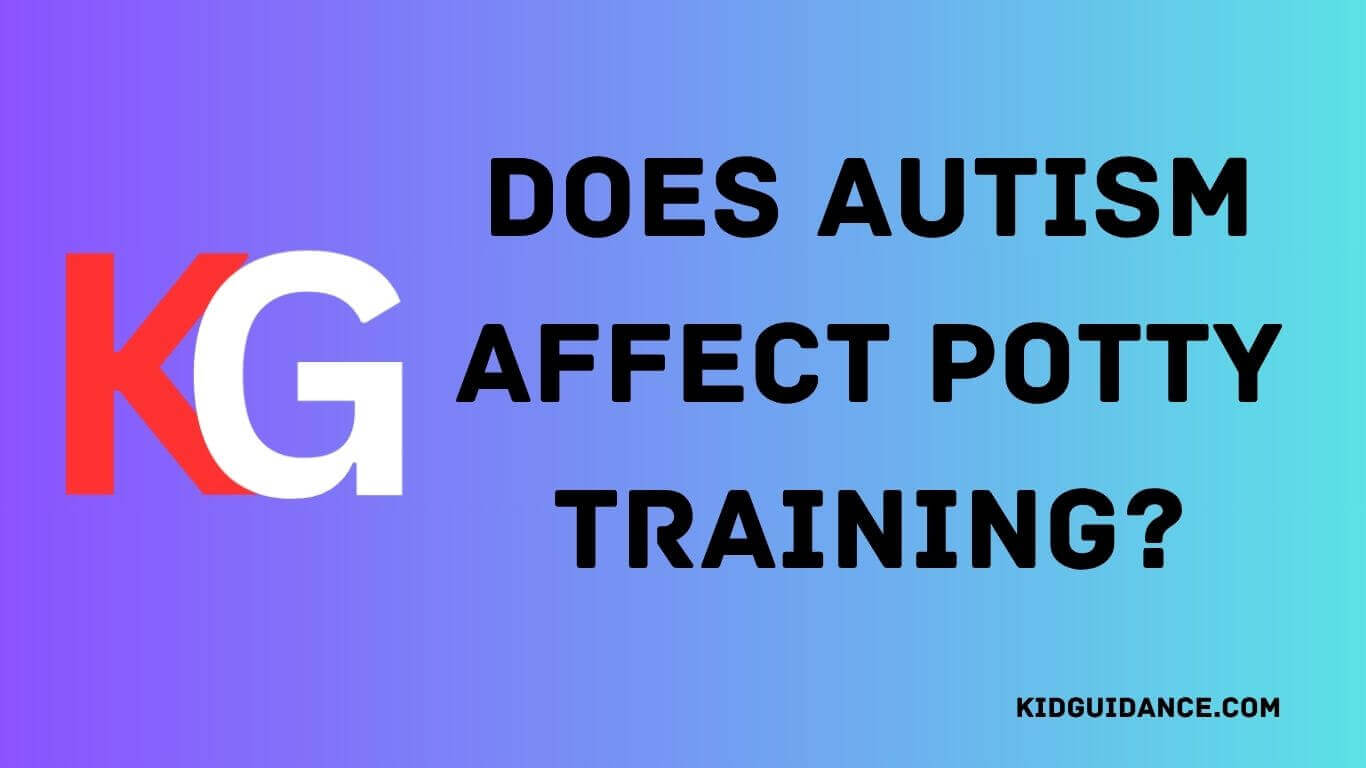When it comes to potty training, many parents wonder, Does autism affect potty training? If you’re facing this challenge, you’re not alone. Potty training can be especially difficult for children with autism, as it often involves a mix of communication hurdles, sensory sensitivities, and a need for routine. In my experience, patience, consistency, and understanding your child’s unique needs are key. I’ll share tips and insights on navigating potty training for kids with autism, so you can approach it with confidence and support. Whether you’re just starting or hitting a roadblock, understanding these challenges can help you make this milestone less stressful for both you and your child.
Does Autism Affect Potty Training? Understanding the Challenges and Strategies
Potty training is a milestone that every parent looks forward to. However, for parents of children with autism, this process can be particularly challenging. Autism Spectrum Disorder (ASD) is a developmental condition that impacts communication, behavior, and sensory processing, all of which play a role in potty training. Understanding how autism can affect this crucial phase of development is essential for creating effective and supportive potty training strategies.
Personal Experience Prompt: I’ve seen many parents struggling with potty training, and it’s clear that understanding autism’s impact on this process can make a world of difference. If you’re in the same boat, feel free to share your experiences below!
Understanding Autism and Its Impact on Development
What is Autism Spectrum Disorder (ASD)?
Autism Spectrum Disorder (ASD) is a developmental disorder that affects how a person communicates, interacts with others, and learns. It exists on a spectrum, meaning that each person with autism may experience a unique combination of strengths and challenges.
Children with autism may struggle with:
- Sensory processing: They may be hypersensitive or hyposensitive to certain sensations.
- Social interactions: Difficulty in communicating needs or emotions.
- Routine and structure: A preference for familiar routines and aversion to changes, which can complicate potty training.
Understanding these challenges helps explain why potty training might be more difficult for children with autism compared to their neurotypical peers.
Does Autism Affect Potty Training?
The Challenges in Potty Training
Potty training for children with autism often presents several hurdles:
- Communication Delays: Children with autism may have delayed speech or struggle with nonverbal communication, making it hard for them to express when they need to use the bathroom.
- Sensory Sensitivities: Many children with autism have heightened or diminished sensory experiences, such as being afraid of loud flushing toilets or uncomfortable with the feel of toilet paper.
- Motor Skill Delays: Some children with autism may not recognize their bodily signals, like the urge to urinate or defecate, making it difficult for them to initiate potty training independently.
- Routine and Structure: Potty training involves changes in routine, and for children with autism, this can be overwhelming. Consistent routines and predictable environments are essential to their learning process.
Signs of Readiness for Potty Training in Children with Autism
How to Recognize Potty Training Readiness
Just like any other child, a child with autism will show signs of readiness for potty training. Look for signs such as:
- Staying dry for extended periods.
- Showing an interest in the bathroom or other family members using the toilet.
- Using simple words or signs to indicate the need to go.
- Following simple instructions, such as pulling down pants or sitting on the toilet.
If your child is showing these signs, it might be a good time to begin potty training, but it’s important to go at your child’s pace.
Personal Experience Prompt: “When did your child show signs of readiness? Share your journey and any tips you have for others.”
How to Tackle Potty Training Challenges for Children with Autism
Step-by-Step Approach for Potty Training
To effectively potty train a child with autism, follow these steps:
- Create a Consistent Routine: Children with autism thrive on predictability. Set regular bathroom times and use visual cues to help your child understand when it’s time to go.
- Use Positive Reinforcement: Rewarding your child for successful potty trips helps reinforce the behavior. Praise and offer small rewards like a favorite snack or extra playtime.
- Incorporate Communication Tools: If your child struggles with verbal communication, use visual aids, sign language, or communication devices to help them signal when they need to go.
- Be Patient and Repetitive: Repetition is key. Be prepared for setbacks, but stay consistent with your approach.
Sensory Adaptations
Many children with autism have sensory issues, and this can make potty training even harder. Here are some tips:
- Noise-Canceling Headphones: For kids sensitive to the sound of toilets flushing, headphones can help.
- Quiet Bathrooms: If your child is afraid of public restrooms, try to find bathrooms with fewer distractions, or visit during quieter times.
- Comfortable Toileting Experience: If your child is uncomfortable with toilet paper or the feel of a toilet seat, consider using wipes or a cushioned seat.
Fading Rewards
It’s important to gradually reduce reliance on rewards to avoid over-reliance. Start by rewarding every successful attempt, then move to rewarding after a set number of successful trips.
Personal Experience Prompt: “How did rewards or incentives work for your child? Share your success stories or challenges.”
5. Potential Pitfalls and How to Avoid Them
Resistance to Potty Training
Many children with autism will show resistance to potty training. This can take the form of:
- Refusing to sit on the toilet.
- Having accidents or avoiding the toilet altogether.
- Overcoming this resistance requires patience, positive reinforcement, and avoiding power struggles. Always offer choices to empower your child, and avoid punishing them for accidents, as this can lead to further resistance.
Regression During Training
Potty training often involves setbacks, especially for children with autism. Regression—where a child starts to forget or resist what they have learned—is normal. If your child regresses, stay calm and consistent with your approach. Focus on positive practice and continue reinforcing progress.
Personal Experience Prompt: “Have you experienced regression in potty training? How did you handle it?”
How Long Does Potty Training Take for Children with Autism?
Potty training can take longer for children with autism. While some children may learn quickly, others might take months. It’s essential to remain patient and flexible. Remember, every child is different, and your child may take more time to master the routine.
Importance of Consistency and Patience
Potty training is not a race. Consistency, repetition, and patience are key. Celebrate small victories along the way, and try not to get frustrated if progress is slow.
Alternative Approaches and Tools for Potty Training with Autism
Assistive Technology and Devices
Technology can be a helpful aid in potty training. There are apps that provide visual timers or even games to encourage potty training. These tools can make the process more engaging for children with autism.
Therapies and Support
Behavioral therapies like ABA (Applied Behavior Analysis) can be helpful in reinforcing potty training behaviors. Working with an occupational therapist can also help address any sensory issues or motor delays your child may be experiencing.
When to Seek Professional Help
If potty training continues to be a struggle, it might be time to consult a professional. An expert in child development or a behavior therapist can help create a personalized plan tailored to your child’s needs.
FAQs
How to tell if a newborn has autism?
Autism may not be immediately noticeable in newborns, but signs can include lack of eye contact, delayed responses to sounds, or lack of social engagement.
Is autism noticed at birth?
Autism is not usually detected at birth but may become apparent as early as 12 to 18 months when developmental milestones are not met.
Do autistic newborns cry a lot?
Autistic newborns may cry more or less than typical babies. Sensory sensitivities can affect their crying patterns, often leading to distress in response to overstimulation.
Do autistic newborns smile?
While some autistic newborns may smile, they may not engage in social smiling or eye contact in the same way as neurotypical infants.
Conclusion
Summary of Key Points
Understanding how autism affects potty training helps parents and caregivers approach the process with empathy and patience. Consistency, positive reinforcement, and tailored strategies are crucial for success.
Final Encouragement
Potty training may be a challenge, but with the right approach, your child will eventually master it. Every child’s journey is unique, so take it one step at a time. You’ve got this!
Personal Experience Prompt: “How has your experience been with potty training your child with autism? Share your tips or struggles below!”




